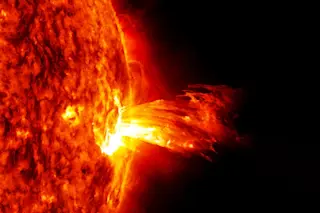When ‘Oumuamua passed by our neck of the woods last fall, it got everyone talking. Sure, some of your Facebook friends were likely eager to speculate on the rock’s possibly extraterrestrial origins. But as the first known interstellar visitor, it got scientists curious too. Maybe there are other intergalactic interlopers among us?
Perhaps it would be possible to study the orbits of known, weirdly orbiting objects in the solar system, and divine any extrasolar origins simply by tracing their path through space backwards?
Well it is, and they did. According to a study published this week in Monthly Notices of the Royal Astronomical Society: Letters, a team of European astronomers did just that, and found eight new candidate interstellar objects. But that isn’t even the best part.
After analyzing the orbits of the solar system’s 339 “hyperbolic objects” — that is, relatively small bodies (asteroids and comets) with drastic, v-shaped ...














